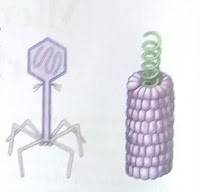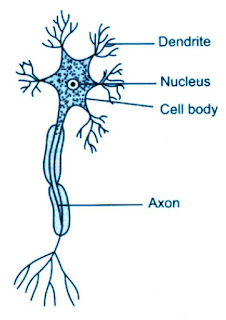NCERT Solution for Class 8 Science: Ch 2 Microorganisms -Friend and Foe
Discussed NCERT solution of class 8 subject science of chapter 2 name microorganisms along with questions ,answers, notes ,PDF.
Question 1:
Fill in the blanks:
(a) Microorganisms can be seen with the help of a ____________.
(b) Blue green algae fix __________ directly from air to enhance fertility of soil.
(c) Alcohol is produced with the help of __________.
(d) Cholera is caused by __________.
Answer 1:
(a) Microorganisms can be seen with the help of a microscope.
(b) Blue green algae fix nitrogen directly from air to enhance fertility of soil.
(c) Alcohol is produced with the help of microorganisms.
(d) Cholera is caused by bacteria.
Question 2:
Tick the correct answer:
(a) Yeast is used in the production of
(i) sugar (ii) alcohol (iii) hydrochloric acid (iv) oxygen
Answer: Yeast is used in the production of alcohol.
(b) The following is an antibiotic
(i) Sodium bicarbonate (ii) Streptomycin (iii) Alcohol (iv) Yeast
Answer: streptomycin is an antibiotic.
(c) Carrier of malaria-causing protozoan is
(i) female Anopheles mosquito (ii) cockroach (iii) housefly (iv) butterfly
Answer: carrier of Malaria causing Protozoan is female Anopheles Mosquito.
(d) The most common carrier of communicable diseases is
(i) ant (ii) housefly (iii) dragonfly (iv) spider
Answer: the most common carrier of communicable disease is housefly.
(e) The bread or idli dough rises because of
(i) heat (ii) grinding (iii) growth of yeast cells (iv) kneading
Answer: the bread aur idli dough rises because of growth of yeast cells.
(f) The process of conversion of sugar into alcohol is called
(i) nitrogen fixation (ii) moulding (iii) fermentation (iv) infection
Answer: the process of conversion of sugar into alcohol is called fermentation.
Question 3:
Match the organisms in Column I with their action in Column II.
Column I Column II
(i) Bacteria. (a) Fixing Nitrogen
(ii) Rhizobium (b) Setting of curd
(iii) Lactobacillus (c) Baking of bread
(iv) Yeast (d) Causing Malaria
(v) A protozoan (e) Causing Cholera
(vi) A Virus (f) Causing AIDS
(g) Producing antibodies
Answer 3:
(i) Bacteria (e) Causing Cholera
(ii) Rhizobium (a) Fixing Nitrogen
(iii) Lactobacillus (b) Setting of curd
(iv) Yeast (c) Baking of bread
(v) A protozoan (d) Causing Malaria
(vi) A Virus (f) Causing AIDS
Question 4:
Can microorganisms be seen with the naked eye? If not, how can they be seen?
Answer 4:
No, microorganisms cannot be seen by naked eye.
They can be seen with the help of microscope.
Question 5:
What are the major groups of microorganisms?
Answer 5:
Microorganisms are classified into four major groups are (i)bacteria, (ii) fungi, (iii) protozoan (iv) virus and (v) algae.
(i) bacteria: they are single celled disease causing microorganisms. They are in various shapes like rod shapes, comma shaped etc.
(ii) fungi: they are mostly multicellular microorganism. Some of them cause disease. Example bread mould.
(iii) protozoan: they may be unicellular or multicellular. Such as amoeba.
(iv) virus: they generally disease causing micro organism. They reproduce only inside living cells.
(v) Algae: they are multicellular organism. Example Spirogyra and chlamydomonas.
Question 6:
Name the microorganisms which can fix atmospheric nitrogen in the soil.
Answer 6:
Rhizobium bacteria and certain blue green algae can fix atmospheric nitrogen in the soil.
Question 7:
Write 10 lines on the usefulness of microorganisms in our lives.
Answer 7:
Microorganisms are too small to be seen through naked eyes. However, they are vital to plants and the environment.
Importance of microorganisms:
(i) Microorganisms are utilised in the making of curd, bread and cake.
(ii) they used in production of alcohol wine and vinegar.
(iii) they used in preparation of medicines like antibiotics.
(iv) they used in agricultural purpose to increase fertility of soil.
(v) they used to clean up the environment by decomposing the organic matter of Dead plants and dead animals and animal wastes.
(vi) they used to reduce pollution.
(vii) some bacteria which are present in intestine helps in proper digestion.
(viii) yeast is used in bakery industry to make bread cake etc.
.Question 8:
Write a short paragraph on the harms caused by microorganisms.
Answer 8:
Microorganisms are harmful in various ways. There are some microorganisms which cause diseases in human beings, plants and animals. The microorganisms which cause disease s are called pathogens. Beside this, some of them spoil food, clothing and leather. Some of the common diseases affecting humans are cholera, common cold, chicken pox and tuberculosis. Disease causing microorganisms (smaut and rust) in plants like wheat, rice, potato, sugarcane, orange, apple and others reduce the yield of crops.
Question 9:
What are antibiotics? What precautions must be taken while taking antibiotics?
Answer 9:
The medicines that kill or stop the growth of the disease – causing microorganisms are called antibiotics.For example: Streptomycin, tetracycline, etc.
Following precautions must be taken while taking antibiotics:
(i) Antibiotics must be taken only on the advice of a qualified and experienced doctor.
(ii) One must finish the course prescribed by the doctor and must follow his instruction.
(iii) Antibiotics must be avoided when not needed or in wrong doses.
Question 1:
Fill in the blanks:
(a) Microorganisms can be seen with the help of a ____________.
(b) Blue green algae fix __________ directly from air to enhance fertility of soil.
(c) Alcohol is produced with the help of __________.
(d) Cholera is caused by __________.
Answer 1:
(a) Microorganisms can be seen with the help of a microscope.
(b) Blue green algae fix nitrogen directly from air to enhance fertility of soil.
(c) Alcohol is produced with the help of microorganisms.
(d) Cholera is caused by bacteria.
Question 2:
Tick the correct answer:
(a) Yeast is used in the production of
(i) sugar (ii) alcohol (iii) hydrochloric acid (iv) oxygen
Answer: Yeast is used in the production of alcohol.
(b) The following is an antibiotic
(i) Sodium bicarbonate (ii) Streptomycin (iii) Alcohol (iv) Yeast
Answer: streptomycin is an antibiotic.
(c) Carrier of malaria-causing protozoan is
(i) female Anopheles mosquito (ii) cockroach (iii) housefly (iv) butterfly
Answer: carrier of Malaria causing Protozoan is female Anopheles Mosquito.
(d) The most common carrier of communicable diseases is
(i) ant (ii) housefly (iii) dragonfly (iv) spider
Answer: the most common carrier of communicable disease is housefly.
(e) The bread or idli dough rises because of
(i) heat (ii) grinding (iii) growth of yeast cells (iv) kneading
Answer: the bread aur idli dough rises because of growth of yeast cells.
(f) The process of conversion of sugar into alcohol is called
(i) nitrogen fixation (ii) moulding (iii) fermentation (iv) infection
Answer: the process of conversion of sugar into alcohol is called fermentation.
Question 3:
Match the organisms in Column I with their action in Column II.
Column I Column II
(i) Bacteria. (a) Fixing Nitrogen
(ii) Rhizobium (b) Setting of curd
(iii) Lactobacillus (c) Baking of bread
(iv) Yeast (d) Causing Malaria
(v) A protozoan (e) Causing Cholera
(vi) A Virus (f) Causing AIDS
(g) Producing antibodies
Answer 3:
(i) Bacteria (e) Causing Cholera
(ii) Rhizobium (a) Fixing Nitrogen
(iii) Lactobacillus (b) Setting of curd
(iv) Yeast (c) Baking of bread
(v) A protozoan (d) Causing Malaria
(vi) A Virus (f) Causing AIDS
Question 4:
Can microorganisms be seen with the naked eye? If not, how can they be seen?
Answer 4:
No, microorganisms cannot be seen by naked eye.
They can be seen with the help of microscope.
Question 5:
What are the major groups of microorganisms?
Answer 5:
Microorganisms are classified into four major groups are (i)bacteria, (ii) fungi, (iii) protozoan (iv) virus and (v) algae.
(i) bacteria: they are single celled disease causing microorganisms. They are in various shapes like rod shapes, comma shaped etc.
(ii) fungi: they are mostly multicellular microorganism. Some of them cause disease. Example bread mould.
(iii) protozoan: they may be unicellular or multicellular. Such as amoeba.
(iv) virus: they generally disease causing micro organism. They reproduce only inside living cells.
(v) Algae: they are multicellular organism. Example Spirogyra and chlamydomonas.
Question 6:
Name the microorganisms which can fix atmospheric nitrogen in the soil.
Answer 6:
Rhizobium bacteria and certain blue green algae can fix atmospheric nitrogen in the soil.
Question 7:
Write 10 lines on the usefulness of microorganisms in our lives.
Answer 7:
Microorganisms are too small to be seen through naked eyes. However, they are vital to plants and the environment.
Importance of microorganisms:
(i) Microorganisms are utilised in the making of curd, bread and cake.
(ii) they used in production of alcohol wine and vinegar.
(iii) they used in preparation of medicines like antibiotics.
(iv) they used in agricultural purpose to increase fertility of soil.
(v) they used to clean up the environment by decomposing the organic matter of Dead plants and dead animals and animal wastes.
(vi) they used to reduce pollution.
(vii) some bacteria which are present in intestine helps in proper digestion.
(viii) yeast is used in bakery industry to make bread cake etc.
.Question 8:
Write a short paragraph on the harms caused by microorganisms.
Answer 8:
Microorganisms are harmful in various ways. There are some microorganisms which cause diseases in human beings, plants and animals. The microorganisms which cause disease s are called pathogens. Beside this, some of them spoil food, clothing and leather. Some of the common diseases affecting humans are cholera, common cold, chicken pox and tuberculosis. Disease causing microorganisms (smaut and rust) in plants like wheat, rice, potato, sugarcane, orange, apple and others reduce the yield of crops.
Question 9:
What are antibiotics? What precautions must be taken while taking antibiotics?
Answer 9:
The medicines that kill or stop the growth of the disease – causing microorganisms are called antibiotics.For example: Streptomycin, tetracycline, etc.
Following precautions must be taken while taking antibiotics:
(i) Antibiotics must be taken only on the advice of a qualified and experienced doctor.
(ii) One must finish the course prescribed by the doctor and must follow his instruction.
(iii) Antibiotics must be avoided when not needed or in wrong doses.
You May Also Like:
Ch 2 Microorganisms -Friend and Foe


